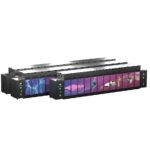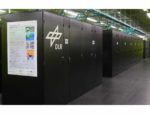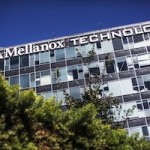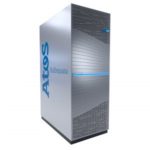In this feature article from our friends over at Mellanox, we discuss how weather and climate models are both compute and data intensive. Forecast quality scales with modeling complexity and resolution. Resolution depends on the performance of supercomputers. And supercomputer performance depends on the underlying interconnect technology: to get higher performance, the interconnect must be able to move data quickly, effectively and in a scalable manner across compute resources.
Lenovo to deploy 17 Petaflop supercomputer at KIT in Germany
Today Lenovo announced a contract for a 17 petaflop supercomputer at Karlsruhe Institute of Technology (KIT) in Germany. Called HoreKa, the system will come online this Fall and will be handed over to the scientific communities by summer 2021. The procurement contract is reportedly on the order of EUR 15 million. “The result is an innovative hybrid system with almost 60.000 next-generation Intel Xeon Scalable Processor cores and 220 terabytes of main memory as well as 740 NVIDIA A100 Tensor Core GPUs. A non-blocking NVIDIA Mellanox InfiniBand HDR network with 200 GBit/s per port is used for communication between the nodes. Two Spectrum Scale parallel file systems offer a total storage capacity of more than 15 petabytes.”
SDSC Expanse Supercomputer from Dell Technologies to serve 50,000 Users
In this special guest feature, Janet Morss at Dell Technologies writes that the company will soon deploy a new flagship supercomputer at SDSC. “Expanse will deliver the power of 728 dual-socket Dell EMC PowerEdge C6525 servers with 2nd Gen AMD EPYC processors connected with Mellanox HDR InfiniBand. The system will have 93,000 compute cores and is projected to have a peak speed of 5 petaflops. That will almost double the performance of SDSC’s current Comet supercomputer, also from Dell Technologies.”
GPCNeT or GPCNoT?
In this special guest feature, Gilad Shainer from Mellanox Technologies writes that the new GPCNeT benchmark is actually a measure of relative performance under load rather than a measure of absolute performance. “When it comes to evaluating high-performance computing systems or interconnects, there are much better benchmarks available for use. Moreover, the ability to benchmark real workloads is obviously a better approach for determining system or interconnect performance and capabilities. The drawbacks of GPCNeT benchmarks can be much more than its benefits.”
Azure HBv2 Virtual Machines eclipse 80,000 cores for MPI HPC
Today Microsoft announced general availability of Azure HBv2-series Virtual Machines designed to deliver leadership-class performance, message passing interface (MPI) scalability, and cost efficiency for a variety of real-world HPC workloads. “HBv2 VMs deliver supercomputer-class performance, message passing interface (MPI) scalability, and cost efficiency for a variety of real-world high performance computing (HPC) workloads, such as CFD, explicit finite element analysis, seismic processing, reservoir modeling, rendering, and weather simulation. Azure HBv2 VMs are the first in the public cloud to feature 200 gigabit per second HDR InfiniBand from Mellanox.
HLRS Inaugurates Hawk Supercomputer from HPE
HLRS officially dedicated their new Hawk supercomputer computer this week at a ceremony in Stuttgart, Germany. With a peak performance of approximately 26 Petaflops, Hawk is an HPE Apollo 9000 System and is among the fastest supercomputers worldwide and the fastest general purpose system for scientific and industrial computing in Europe. “Computers like Hawk are tools for advanced research in the sciences and in industry,” said Parliamentary State Secretary Dr. Michael Meister. “They enable excellent science and innovation, and solidify Germany’s international position as a top location for supercomputing.”
AMD Powers CARA Supercomputer from NEC in Dresden
The DLR German Aerospace Center dedicated its new CARA supercomputer in Dresden on February 5, 2020. With 1.746 Petaflops of performance on the Linpack benchmark, the AMD-powered system from NEC is currently rated #221 on the TOP500. “With its almost 150,000 computing cores, CARA is one of the most powerful supercomputers available internationally for aerospace research,” said Prof. Markus Henke from TU Dresden.
200G HDR InfiniBand to Accelerate Weather Forecasting at ECMWF
Today Mellanox announced that 200 Gigabit HDR InfiniBand has been selected by the European Centre for Medium-Range Weather Forecasts (ECMWF) to accelerate their new world-leading supercomputer, based on Atos’ latest BullSequana XH2000 technology. By leveraging HDR InfiniBand’s fast data throughout, extremely low latency, and smart In-Network Computing engines, ECMWF will enhance, speed up, and increase the accuracy of weather forecasting and predictions.
Atos to deploy AMD-powered AION Supercomputer at the University of Luxembourg
Today Atos announced a 4-year contract to supply its BullSequana XH2000 supercomputer to the University of Luxembourg. “The BullSequana XH2000 supercomputer will give researchers 1.5 times more computing capacity with a theoretical peak performance of 1.7 petaflops which will complement the existing supercomputing cluster. It will be equipped with AMD EPYC processors and Mellanox InfiniBand HDR technology, connected to a DDN storage environment.”
Mellanox Rocks the TOP500 with HDR InfiniBand at SC19
In this video, Gilad Shainer from Mellanox describes the company’s dominating results on the TOP500 list of the world’s fastest supercomputers. “At SC19, Mellanox announced that 200 gigabit per second HDR InfiniBand accelerates 31% of the new 2019 InfiniBand systems on November’s TOP500 supercomputing list, demonstrating market demand for faster data speeds and smart interconnect technologies. Moreover, HDR InfiniBand connects the fastest TOP500 supercomputer built in 2019.”













